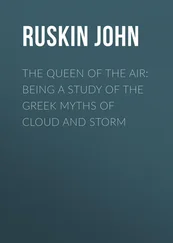George Dodd - The History of the Indian Revolt and of the Expeditions to Persia, China and Japan 1856-7-8
Здесь есть возможность читать онлайн «George Dodd - The History of the Indian Revolt and of the Expeditions to Persia, China and Japan 1856-7-8» — ознакомительный отрывок электронной книги совершенно бесплатно, а после прочтения отрывка купить полную версию. В некоторых случаях можно слушать аудио, скачать через торрент в формате fb2 и присутствует краткое содержание. Жанр: foreign_antique, foreign_prose, на английском языке. Описание произведения, (предисловие) а так же отзывы посетителей доступны на портале библиотеки ЛибКат.
- Название:The History of the Indian Revolt and of the Expeditions to Persia, China and Japan 1856-7-8
- Автор:
- Жанр:
- Год:неизвестен
- ISBN:нет данных
- Рейтинг книги:3 / 5. Голосов: 1
-
Избранное:Добавить в избранное
- Отзывы:
-
Ваша оценка:
- 60
- 1
- 2
- 3
- 4
- 5
The History of the Indian Revolt and of the Expeditions to Persia, China and Japan 1856-7-8: краткое содержание, описание и аннотация
Предлагаем к чтению аннотацию, описание, краткое содержание или предисловие (зависит от того, что написал сам автор книги «The History of the Indian Revolt and of the Expeditions to Persia, China and Japan 1856-7-8»). Если вы не нашли необходимую информацию о книге — напишите в комментариях, мы постараемся отыскать её.
The History of the Indian Revolt and of the Expeditions to Persia, China and Japan 1856-7-8 — читать онлайн ознакомительный отрывок
Ниже представлен текст книги, разбитый по страницам. Система сохранения места последней прочитанной страницы, позволяет с удобством читать онлайн бесплатно книгу «The History of the Indian Revolt and of the Expeditions to Persia, China and Japan 1856-7-8», без необходимости каждый раз заново искать на чём Вы остановились. Поставьте закладку, и сможете в любой момент перейти на страницу, на которой закончили чтение.
Интервал:
Закладка:
Five weeks elapsed between the offence of the 19th native infantry and its punishment by disbandment; five weeks similarly elapsed between the offence and the disbandment of the 34th; and many observant officers were of opinion that these delays worked mischief, by instilling into the minds of the sepoys a belief that the authorities were afraid to punish them. Whether the punishment of disbanding was, after all, sufficiently severe, is a question on which military men are by no means agreed.
At a later date than the events narrated in this chapter, but closely connected with them in subject, was the circulation of a report manifestly intended to rouse the religious prejudices of the Hindoos by a false assertion concerning the designs of the ruling powers. In some of the towns of Southern India, far away from Bengal, unknown emissaries circulated a paper, or at least a story, of which the following was the substance: That the padres, probably Christian missionaries, had sent a petition to the Queen of England, complaining of the slowness with which Hindoos were made to become Christians; they adduced the conduct of some of the Mohammedan potentates of India in past times, such as Tippoo Saib, who had compelled the Hindoos to embrace Islamism; and they suggested a similar authoritative policy. The story made the padres give this advice: to mix up bullocks’ fat and pigs’ fat with the grease employed on the cartridges; in order that, by touching these substances with their teeth or lips, the sepoys might lose caste, and thus induce them to embrace Christianity as their only resource. The climax of the story was reached by making the Queen express her joy at the plan, and her resolve that it should be put in operation. The success of such a lying rumour must, of course, have mainly depended on the ignorance and credulity of the natives.
A far-distant region now calls for notice. At a time when the Upper and Lower Bengal provinces were, as the authorities hoped and believed, recovering from the wild excitement of the cartridge question, the commissioner of the Cis-Sutlej territory had ample means for knowing that the minds of the natives in that region were mischievously agitated by some cause or other. It is necessary here to understand what is meant by this geographical designation. If we consult a map in which an attempt is made, by distinct colouring, to define British territory from semi-independent states, we shall find the region between Delhi and Lahore cut up in a most extraordinary way. The red British patches are seen to meander among the scraps of native territory with great intricacy: so much so, indeed, that a map on a very large scale could alone mark the multitudinous lines of boundary; and even such a map would soon become obsolete, for the red, like a devouring element, has been year by year absorbing bits of territory formerly painted green or yellow. The peculiar tribe of the Sikhs, besides occupying the Punjaub, inhabit a wide region on the east or left bank of the river Sutlej, generally included under the name of Sirhind. For fifty years the British in India have had to deal, or have made a pretext for dealing, with the petty Sikh chieftains of this Sirhind region: at one time ‘protecting’ those on the east of the Sutlej from the aggression of the great Sikh leader, Runjeet Singh, on the west of that river; then ‘annexing’ the small territories of some of these chieftains on failure of male heirs; then seizing others as a punishment for non-neutrality or non-assistance during war-time. Thus it arose that – before the annexation of the Punjaub itself in 1849 – much of the Sikh country in Sirhind had become British, and was divided into four districts marked by the towns of Ferozpore, Umballa or Umballah, Loodianah, and Kythul; leaving Putialah, Jeend, and Furreedkote as the three principal protected or semi-independent Sikh states of that country. Meanwhile a region somewhat to the east or northeast of Sirhind was subject to just the same process. Being hilly, it is called the Hill Country; and being ruled by a number of petty chieftains, the separate bits of territory are called the Hill States. During about forty years the process of absorption has been going on – arising primarily out of the fact that the British aided the Hill chieftains against the Nepaulese, and then paid themselves in their wonted manner. Part of Gurhwal was annexed; then Sundock, Malowa, and a number of other places not easily found in the maps; and afterwards Ramgurh was given back in exchange for Simla, to form a healthy holiday-place among the hills, a sort of Balmoral for sick governors and commanders. As a final result, much of the Hill Country became British, and the rest was left in the hands of about twenty petty chieftains.
Now, when the Cis-Sutlej territory is mentioned, it must be interpreted as including all the region taken by the British from the minor Sikh chieftains in Sirhind; together with such of the Hill States of Gurhwal and its vicinity as have become British. The whole together have been made a sub-government, under a commissioner responsible to the governor-general; or, more strictly, the commissioner rules the Sirhind region, while the Hills are included among the non-regulation districts of the Agra government. The four towns and districts of Ferozpore, Loodianah, Umballa, and Kythul, east of the Sutlej, will suffice for our purpose to indicate the Cis-Sutlej territory – so named in a Calcutta point of view, as being on the cis or hither side of the Sutlej, in reference to that city.
It was at Umballa, one of the towns in the Cis-Sutlej territory, that the commissioner, Mr Barnes, reported acts of incendiarism that much perplexed him. On the 26th of March, Hurbunsee Singh, a subadar or native captain in the 36th regiment native infantry, attached to the musketry depôt at that place, became an object of attack to the other men of the regiment; they endeavoured to burn his hut and his property. It was just at the time when reports reached Umballa relative to the cartridges, the using of which was said by the sepoys to be an innovation derogatory to their caste and religion. Hurbunsee Singh had at once come forward, and publicly stated his willingness to fire with such cartridges, as being, in his opinion, free from objection. The incendiarism took place on the day named; and the commissioner directly inferred that there must be something wrong in the thoughts of men who would thus seek to injure one of their own native officers on such grounds. Nothing further occurred, however, until the 13th of April, when another fire broke out. This was followed by a third on the 15th, in some outhouses belonging to the 60th native infantry; by two fires on the 16th, when government property was burned to the value of thirty thousand rupees; by the burning on the 17th of an empty bungalow in the 5th regiment native infantry lines, of a stable belonging to an English officer of the 60th, and of another building. On the 20th, attempts were made on the houses of the jemadar and havildar of the 5th regiment, two native officers favourable to the new cartridges; and under the bed of the jemadar were found gunpowder and brimstone, as if to destroy the man as well as his property. Some of the buildings are believed to have been set on fire by dropping burning brimstone through holes in the roof; and on one occasion, when the attempt at incendiarism had failed, a paper containing powder and brimstone was found. On the 21st and two following days, similar fires occurred. On the 25th, the house of the band-master of Her Majesty’s 9th Lancers was fired and burned; and two or three similar attempts were shortly afterwards made, but frustrated. At all these fires, the engines of the cantonment were set to work; but it was observed that many of the sepoys worked listlessly and indifferently, as if their thoughts were bent rather upon fire-raising than fire-quenching.
Читать дальшеИнтервал:
Закладка:
Похожие книги на «The History of the Indian Revolt and of the Expeditions to Persia, China and Japan 1856-7-8»
Представляем Вашему вниманию похожие книги на «The History of the Indian Revolt and of the Expeditions to Persia, China and Japan 1856-7-8» списком для выбора. Мы отобрали схожую по названию и смыслу литературу в надежде предоставить читателям больше вариантов отыскать новые, интересные, ещё непрочитанные произведения.
Обсуждение, отзывы о книге «The History of the Indian Revolt and of the Expeditions to Persia, China and Japan 1856-7-8» и просто собственные мнения читателей. Оставьте ваши комментарии, напишите, что Вы думаете о произведении, его смысле или главных героях. Укажите что конкретно понравилось, а что нет, и почему Вы так считаете.












